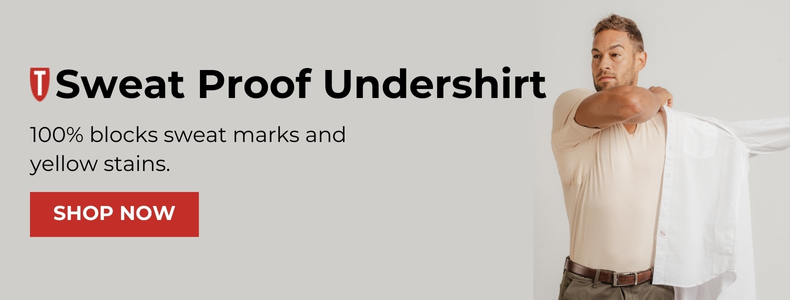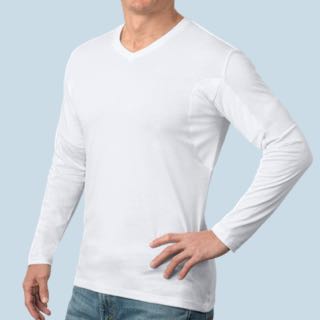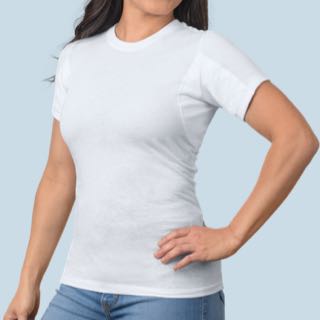How to Wear a Suit Like a Pro: Tips You Need to Know
Wearing a suit should feel like a natural extension of your style. The right suit commands attention without saying a word, but the difference between looking sharp and looking sloppy often comes down to details. Fit, fabric, accessories, and even etiquette all play a role in pulling it off.
We’ll walk you through each step, from getting the fit right to mastering accessories and etiquette, so you can wear your suit confidently anywhere.
Start with the Foundation: Fit
When learning how to wear a suit, start by nailing the basics: Make sure the jacket fits your shoulders, create balance and proportion with the perfect tie length and choose the right pair of pants.
Find the Right Shoulder Fit First
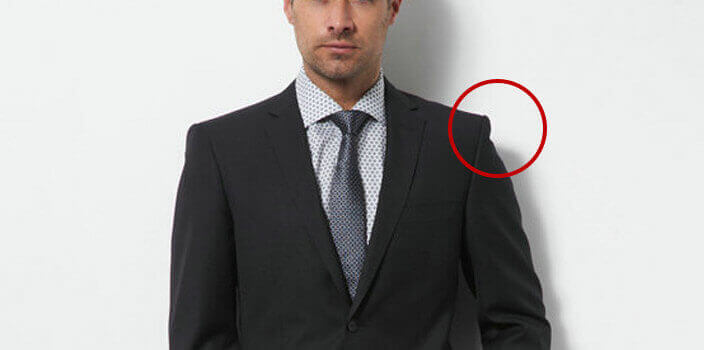
An ill-fitting shoulder sticks out like a sore thumb—unfortunately, the shoulders are the hardest part of a suit to tailor. Here are a few quick guidelines for finding the right shoulder fit:
- Shoulders should sit smoothly without a divot or wrinkling.
- The shoulder pads should end where your shoulder ends.
- Your arms should be able to move comfortably without constriction.
Pro tip: Shop for the shoulders first when choosing a jacket. Tailors can adjust other parts of the jacket with ease.
Tailor Your Suit
Speaking of tailoring, we recommend altering your jacket, pants and other suit components to create the most personalized fit. After choosing a suit, ask your tailor about the following adjustments:
- Sleeves – Sleeves should touch your wrist when your arms are at your sides.
- Pants – Pants should allow for comfortable movement without looking baggy.
- Waist – The waist of your jacket should be snug but not restrictive.
- Buttons – Raise, lower or laterally adjust jacket buttons to tweak the silhouette.
Don’t Be Wary of a Snug Jacket
When assessing fit, a jacket might look too snug even if it’s comfortable to move in. If you don’t wear a suit very often, we recommend prioritizing fit checks instead of mirror checks to determine the correct fit:
- Walk as you normally would; if your arms swing comfortably and you can move your legs and hips without discomfort, your jacket isn’t too tight.
- Give yourself a hug: You should be able to touch your shoulder with your opposite arm easily. If you can’t, consider a jacket with wider shoulders.
- Shrug your jacket on and off. If you can easily don and remove your jacket yourself, it’s not too small.
If a jacket passes all of these tests, repeat them with the next size down. A trim, snug jacket is a classic look—don’t be afraid to opt for a slimmer cut.
Expose Your Sleeve Cuffs a Quarter to Half an Inch
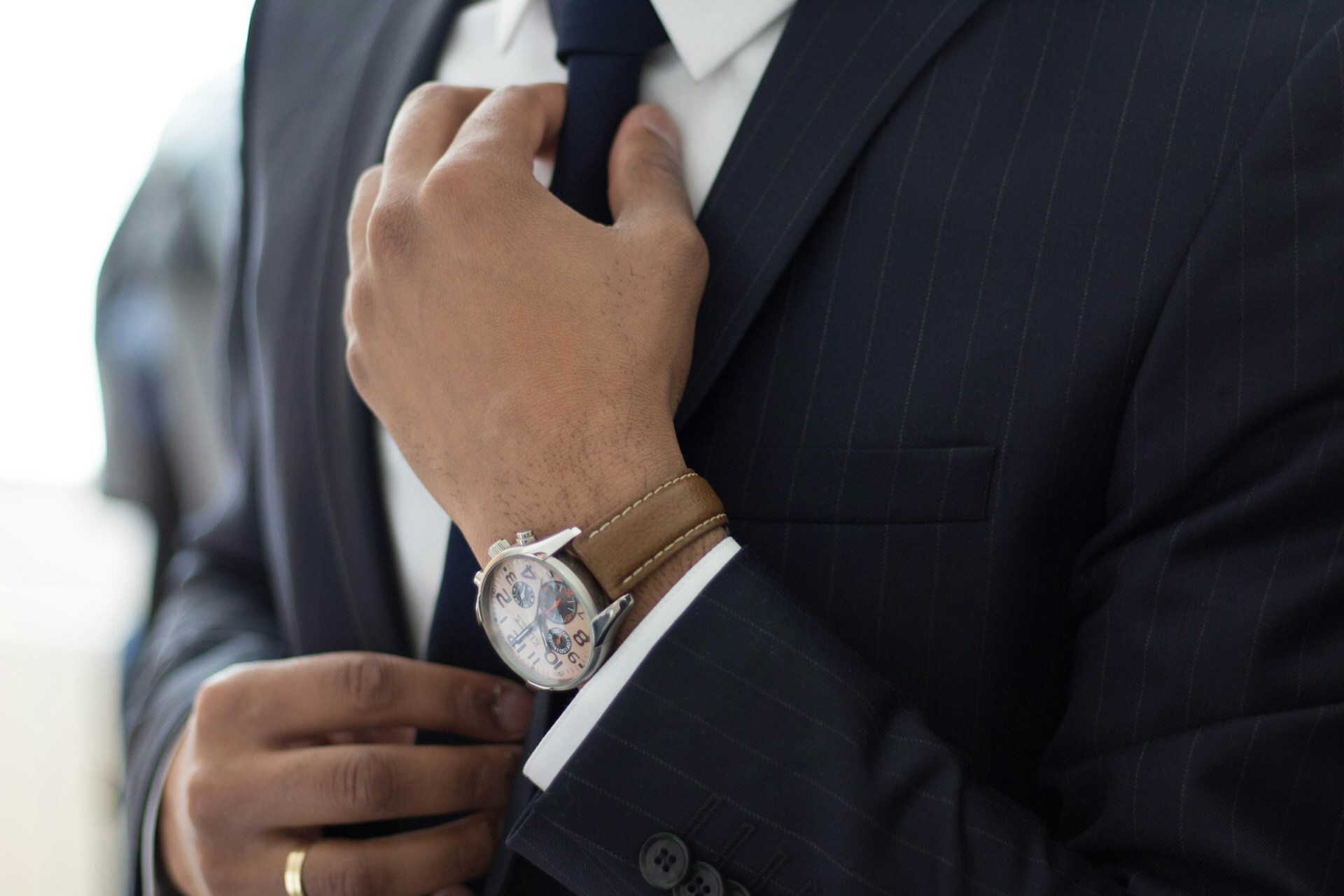
The general rule for jacket sleeve length is to reveal between a quarter inch and a half inch of your dress shirt cuff. If more than a half inch of your shirt cuff is showing, the jacket sleeves are too short; if less than a quarter inch of your shirt cuff is visible, the jacket sleeves are too long.
Perfect the Length of Your Tie and Jacket
Finding the perfect length for your tie and jacket is all about creating balance and proportion:
- With your arms down in a natural position, your jacket hem should end at the knuckle in the middle of your thumb.
- The end of your tie should fall within your waistband or belt buckle.
Short jackets and ties can truncate the top half of your body, creating an illusion of a short torso. Long jackets and ties can also make you appear shorter than you actually are: You don’t want to look like you’re “swimming” in a jacket.
Trouser Fit & Break
What about pants? While shopping, consider:
- Rise – Where the waistband sits on your body
- Taper – The width of the bottom of the legs
- Hem length – Where the hem touches your shoes
- Cuff – A fold at the bottom of your pant legs
How long should your pants be? Let’s turn to the “break”—the place where your pants meet your shoes.
In a “heavy break,” your pants will (tastefully) wrinkle multiple times where your pants meet your shoes. In a “light break,” your pants may only fold slightly (or not fold at all). While light breaks are common for slimmer cuts or tapered pants, heavier breaks are typically paired with looser fits and wider legs.
Choose the Right Fabric, Color & Style
A proper fit provides a strong foundation—one where you can build an ensemble that reflects your personality. With that in mind, let’s explore fabric, color and style options for suits.
Opt for Wool or Wool Blends
If you’re buying your first suit, consider jackets made from wool (or fibers blended with wool). Why?
- Breathability – Whether you’re prone to sweating or dressing up for a summer wedding, wool is one of the most breathable fabrics on the market.
- Durability – Wool, like other natural fibers, can stand the test of time.
- Seasonality – Wool doesn’t have to be thick and heavy; a mid-weight wool jacket is a tasteful choice for all seasons.
Seasonal Fabrics & Weights
While a wool jacket will work for most events and climates, there are certainly exceptions to consider:
- Tropical events – Summer events in ultra-hot climates might demand lighter-weight fabrics like linen or cotton blends.
- Cold locales – While it’s not as durable as wool, flannel offers a cozy, warm and seasonally-appropriate option for colder weather.
Be Intentional About the Color of Your Suit
At upscale events, dress code matters:
- Casual – Events advertised as “business casual,” “dressy casual” or “elevated casual” provide the most flexibility. While lighter colors are likely welcome, versatile colors like navy and charcoal fit the bill, too.
- Formal – For “semi-formal” or “formal” events, opt for darker colors. While black is generally reserved for more formal settings, you can “dress down” a black jacket with grey pants or more casual footwear.
Pro tip: Darker colors are ideal for hiding sweat.
Patterns & Textures
Patterned and textured suits provide a style-forward option when you’re looking to show off your personality.
- Pinstripes provide a subtle touch of color, and they can elongate the figure.
- Windowpanes (grid patterns) can appear more casual, but they can also expand the color palette of your ensemble.
- Seersucker is a quintessential striped fabric perfect for casual or summer events.
Jacket Anatomy Choices
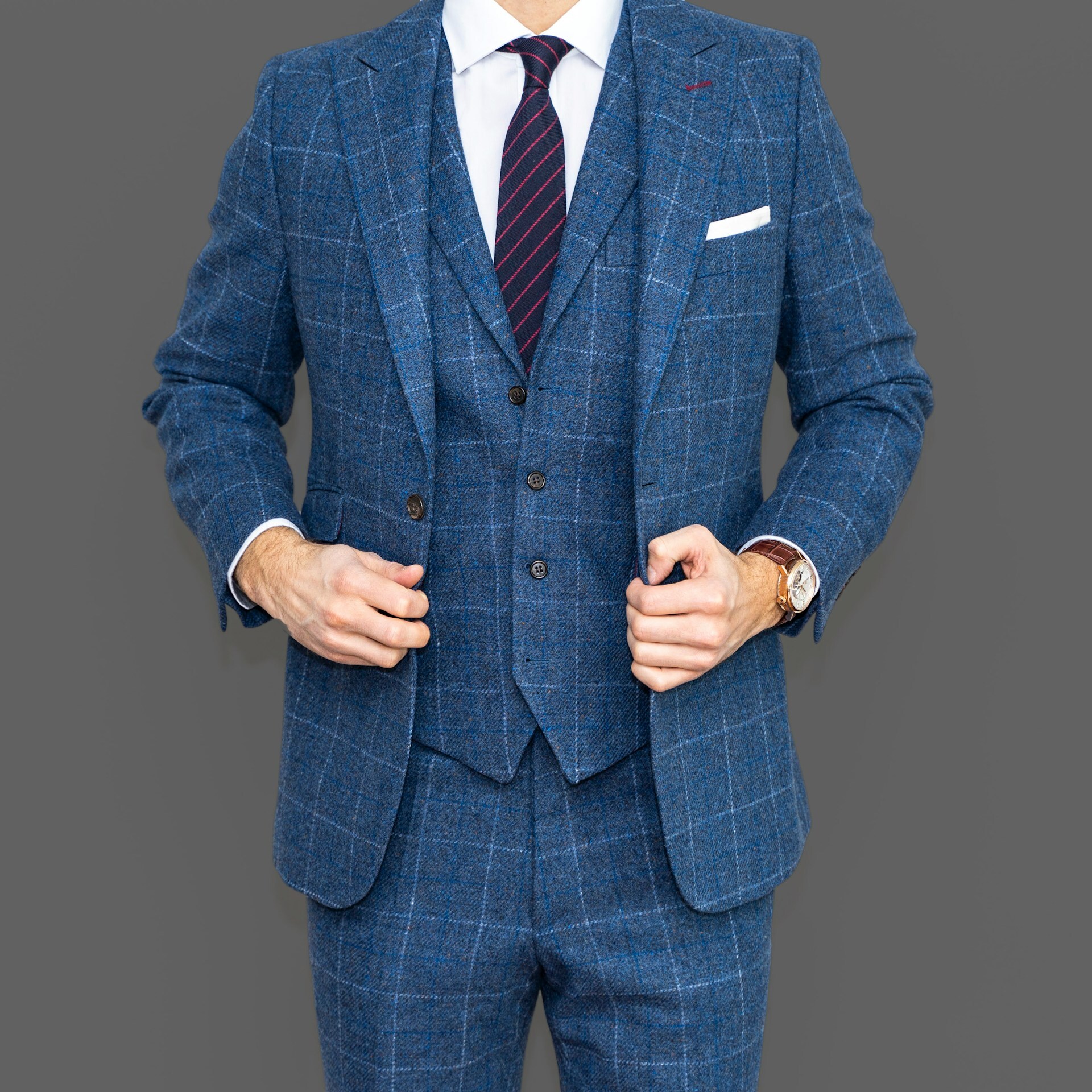
Not all jackets look the same:
- Single vs. double-breasted suits – While single-breasted jackets have two to three buttons in the center, double-breasted jackets feature overlapping buttons that cross in the front.
- Lapel size – Lapels (the folded fabric above the buttons on each side of a jacket) come in various shapes and sizes. Long, narrow lapels can elongate the figure; wider lapels are often well-suited for wider chests.
- Vents – Jackets typically have either one or two vents—slits on the back hem of a jacket that allow for comfortable movement and breathability.
Suit Types & Formality Ladder
Although dress codes can be nuanced, the following standards are somewhat universal:
- Two-piece suits (a jacket and pants) are typically most appropriate for more casual events. In professional settings, two-piece suits are the norm.
- Three-piece suits (a jacket, a waistcoat and pants) are usually reserved for more formal affairs. A three-piece suit, for example, is a must for a black tie event or a cocktail dress code.
Get the Essentials Right: Shirt, Shoes & Accessories
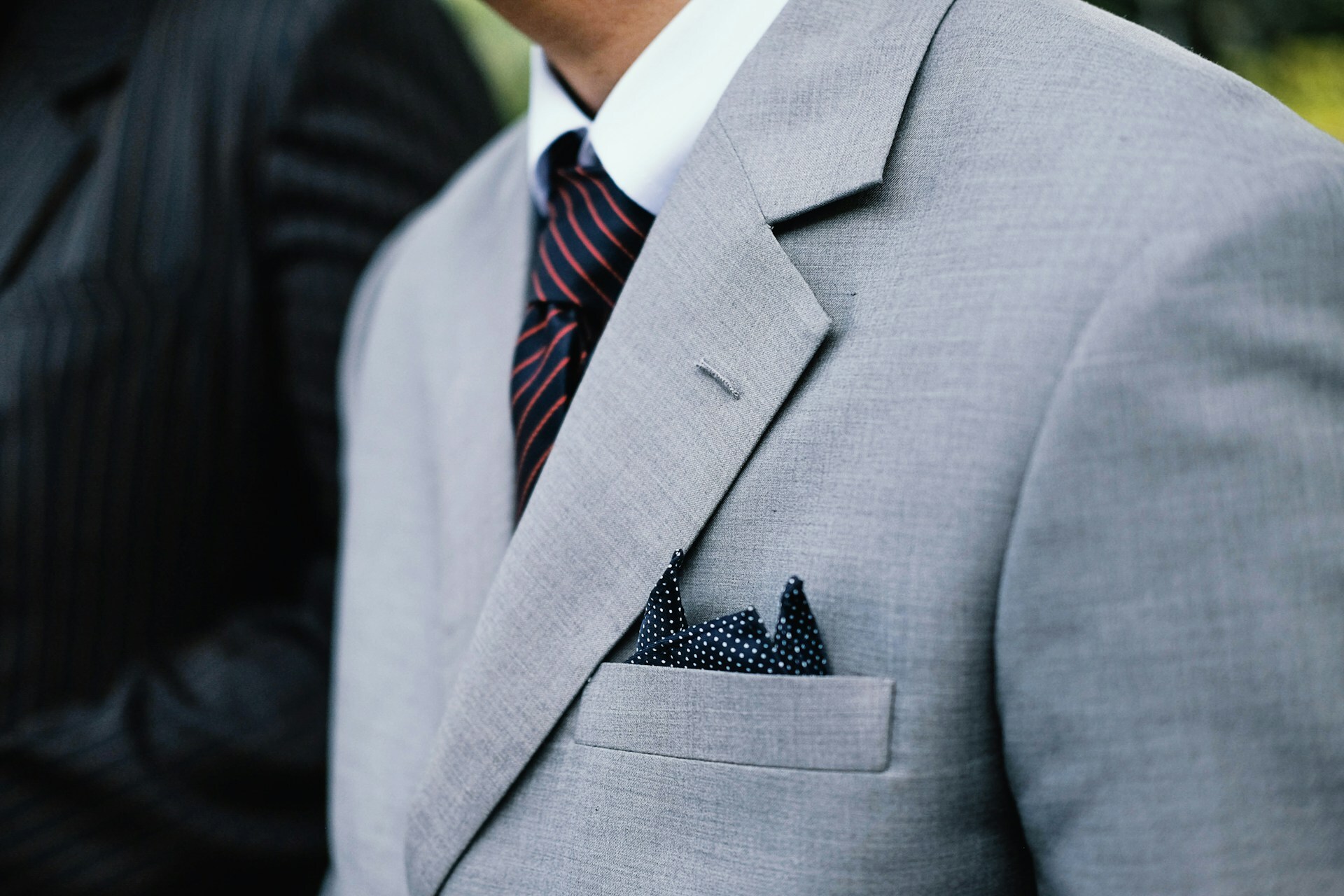
Fit, color and style are essential topics to explore when learning how to wear a suit—but don’t forget about the other elements of a well-crafted outfit. These include:
- Shirts – Invest in a quality dress shirt in a color that matches your jacket and pants. If you’re worried about sweating in your dress shirt, consider breathable fabrics like long-fiber cotton.
- Undershirt – A sweat proof undershirt that blocks underarm stains can be a game-changer, keeping you dry and confident during long days or high-pressure moments without compromising the look of your suit.
- Belts – A solid-colored belt with a neutral buckle is a versatile choice for a variety of occasions.
- Shoes – Depending on the dress code, you can either “dress up” your suit with more formal shoes (lace-up Oxfords, for instance) or “dress down” your ensemble with more casual kicks (like laceless loafers). Matching your shoes and your belt provides extra polish and shows attention to detail.
- Socks – Long socks are a must for a suit—and dark socks are ideal. Light-colored socks (especially white socks) can distract the eye.
- Pocket squares – Looking to jazz up a solid-colored jacket for a casual event? Consider a pocket square. Pocket squares should coordinate with your outfit, but they don’t need to match your tie or your dress shirt perfectly.
- Accessories – To avoid bulk or clashing, keep accessories to a minimum: a watch and everyday rings pair well with just about any suit. For more formal outfits, consider adding cufflinks in a coordinating color.
Master the Tie Game

Zooming in on accessories, let’s talk about the tie:
- Choosing the right tie – A tie in a contrasting color to your dress shirt can provide a pop of panache; your tie doesn’t need to perfectly match your jacket, cufflinks, socks or shoes. For more casual events, a patterned tie can add more personality to your look.
- Nail the knot – While some tie knots pair well with specific fabrics or collar types, the Four in Hand knot is a simple, versatile choice for almost every event. Your tailor can help you choose the ideal knot for your specific suit and dress shirt.
- Match the width of your lapel – Generally speaking, wider lapels match best with wider ties (and vice versa).
Suit Etiquette & Pro Moves
With all of the above in mind, let’s touch on a few more must-know tips for rocking a suit:
- Unbutton your jacket before sitting down – Even if you arrive at an event with your jacket buttoned, make sure to unbutton it before sitting down. This will help maintain your jacket’s shape and avoid mishaps like popped buttons.
- Leave bottom jacket buttons undone – If your jacket has two buttons, button the top only. While you should always close the middle button on a three-button jacket, you can also close the top button if you’d like. On a double-breasted jacket, the top buttons are usually meant to be decorative; the bottom right button should remain open.
- Remove temporary stitching – Suit pockets and vents are typically stitched closed while they’re still on the rack; use scissors to carefully remove these stitches after purchase. Your jacket may also have a sleeve label, which you should also remove.
- Travel wisely – Traveling with a suit? Consider investing in a garment bag or a handheld steamer to keep wrinkles at bay. In a pinch, you can hang wrinkled clothes in the bathroom while you take a shower; with enough time, the steam will help release the wrinkles.
Quick Occasion Playbook
With so many rules and tips to remember, a little bit of analysis paralysis is to be expected. If you’re looking for a quick cheat sheet for a specific occasion, here’s a foolproof blueprint:
- Job interviews – Navy or charcoal suit, conservative tie and minimal accessories
- Weddings – Navy, grey or seasonal suit with a pocket square for extra flair
- Funerals – Black or dark charcoal suit, white shirt and simple tie
- Office/everyday – Navy or grey suit in a wool blend for extra comfort
No matter the occasion, a high-quality suit can help you make a great first impression, show off your personal style and (most importantly) honor special events with an elevated look.
Wear Your Suit With Confidence
Wearing a suit is about more than just looking the part—it’s about feeling confident and comfortable from the first handshake to the last toast. By focusing on fit, fabric, accessories, and etiquette, you’ll master the details that separate a sharp suit from a sloppy one.
And don’t overlook the foundation. Even the best-fitting suit can lose its polish if sweat stains creep through your dress shirt. A Thompson Tee sweat proof undershirt gives you an invisible layer of protection, so you stay dry, confident, and focused on the moment—not your underarms.
Elevate your suit game with confidence from the inside out. Shop Thompson Tee sweat proof undershirts today.
